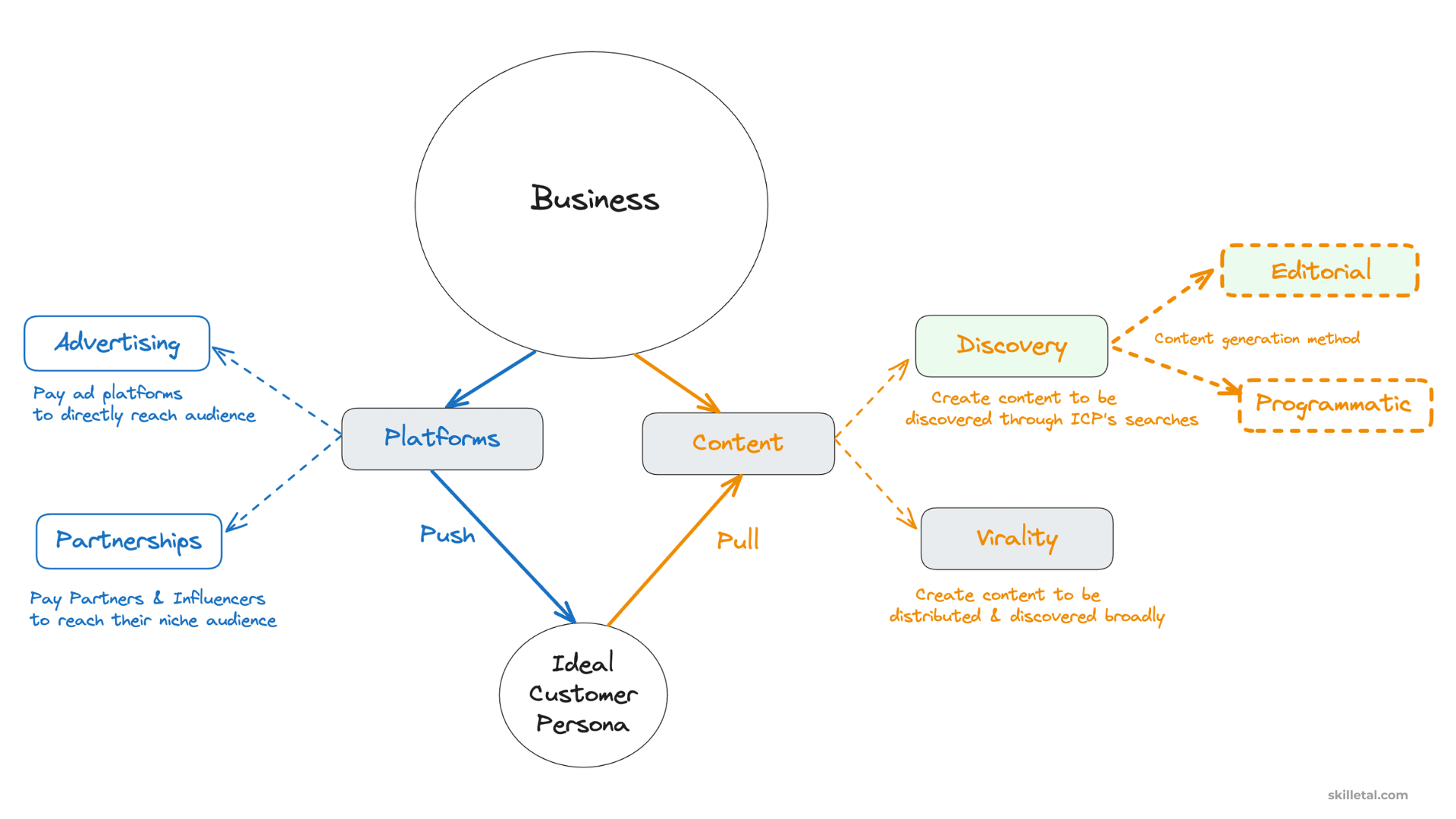What are Editorial Pull Channels?
Editorial Pull Channels are a distinct type of Pull Channel, focusing on content-driven user acquisition strategies. This concept will explore their nature, advantages, disadvantages, and suitability for various businesses.

Understanding Editorial Pull Channels:
While we've distinguished between discovery/search-driven and virality/sharing-driven Pull Channels, Editorial Pull Channels specifically involve content created by individuals or teams, like blogs, videos, or articles. This differs from programmatic content, which is machine-generated for specific searches or product pages.
Advantages of Editorial Content:
Editorial Pull Channels allow for tonal and brand consistency in messaging, vital for businesses building a brand narrative. They are also relatively low-tech to set up, with platforms like YouTube and blogs offering easy entry points.
Disadvantages of Editorial Content:
The main challenges include the scaling costs associated with producing high-quality content regularly and the difficulty in covering the long tail of search queries without programmatic support.
Suitability for Different Businesses:
Editorial Pull Channels are well-suited for businesses aiming to establish thought leadership or a strong brand voice, such as consultancies or niche product brands. However, they might be less effective for businesses requiring extensive coverage of varied search queries, where programmatic content is more efficient.
Effectively leveraging Editorial Pull Channels requires balancing the need for quality content with the scalability of content production.